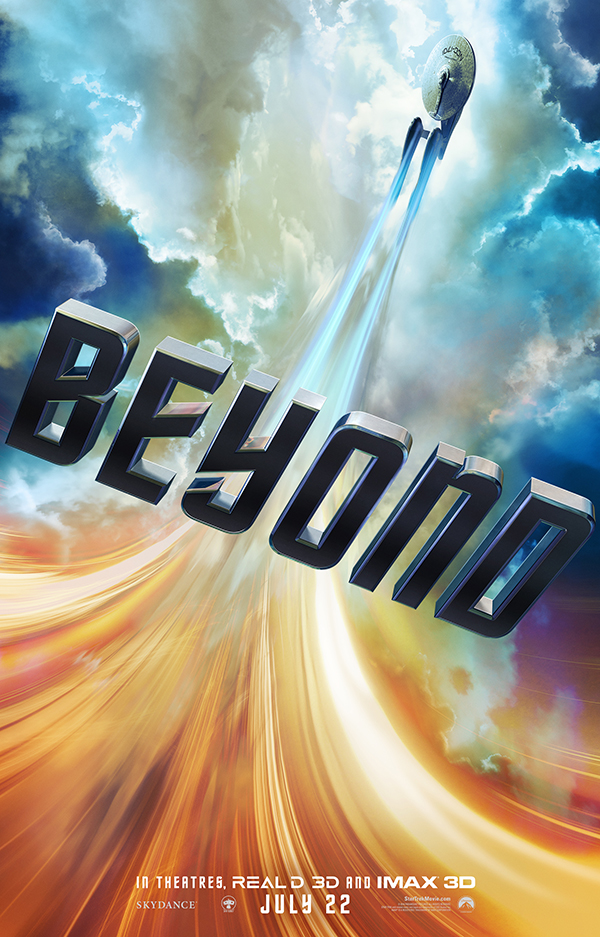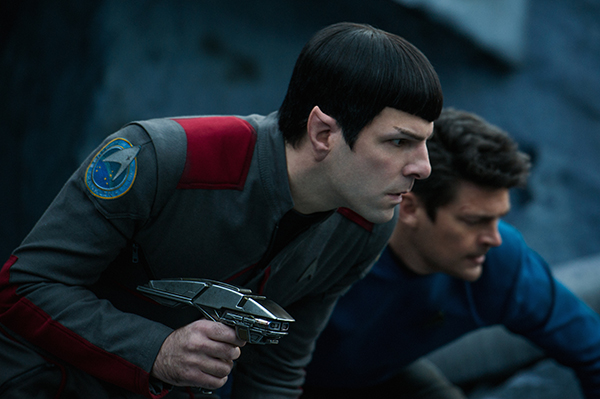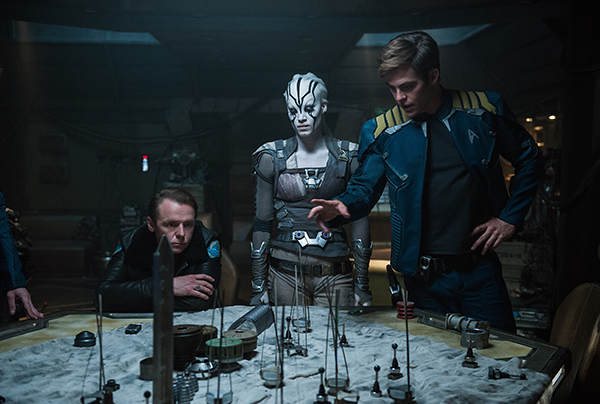
by Bethany Augliere Thursday, July 28, 2016
[Spoiler Alert: This review reveals key plot points of the movie.]

'Star Trek Beyond' is the third installment of the latest series of 'Star Trek' movies. Credit: courtesy of Paramount Pictures
After a three-year wait by anxious fans, “Star Trek Beyond” hit theaters nationwide July 22. The third installment of the latest series of “Star Trek” movies, directed by Justin Lin and co-written by Simon Pegg, features more than two hours of action, stunning scenery and witty banter among the USS Enterprise crew — plus a bit of geology.
The film begins with a slow pan across the Enterprise traveling through space as James Kirk, played by Chris Pine, narrates an entry into the captain’s log. Despite his usual self-assuredness, Kirk feels lost in his role as a Starfleet captain and disheartened with the “episodic” feeling of their mission. The crew is 966 days into a five-year voyage to explore space when they stop at the impressive floating starbase, Yorktown, to restock their supplies. There, we learn that Spock, played by Zachary Quinto, is also considering leaving Starfleet and has ended his relationship with Lt. Uhura, played by Zoe Saldana.
But before they have a chance to talk with one another, Kirk, Spock and the rest of the crew are dispatched on a rescue mission to Altamid, a planet in an unexplored nebula nearby. A surprise attack leaves the crew scattered and stranded in unfamiliar territory. Not only are they lost to themselves, now they are lost to each other. The question is: Can they find their way back?
On Altamid, viewers get their first sense of the geology in “Star Trek Beyond.” The crew land on different parts of the planet, where, along with the characters, the audience glimpses craggy peaks, moss-covered boulders among towering trees, and gold-encrusted rocks. “I really liked all the visuals,” says Kayla Iacovino, an avid “Star Trek” fan and volcanologist with the U.S. Geological Survey in Menlo Park, Calif., who says she plans to rewatch the film to ponder the hypothetical geologic processes that might have created the scenery.

Spock and Bones, played by Zachary Quinto and Karl Urban, respectively, find themselves stranded together on the unfamiliar planet of Altamid. Credit: courtesy of Paramount Pictures
Jessica Ball, a geologist also with the USGS in Menlo Park, Calif., also enjoyed the landscape, which reminded her of iconic Trek settings in other films. But she isn’t convinced by the gold rocks. “Those are visually very striking but not where you would find gold in general,” she says, which is typically found in cracks of pegmatite rocks. “You probably wouldn’t just find it spray-painted on the rocks,” she adds.
Another bit of geology that factors into the plotline in “Beyond” involves jewelry. Uhura wears a necklace — given to her by Spock and which belonged to his late mother — that contains a fragment of a radioactive mineral found only on his home planet of Vulcan. “The idea that there is this one mineral that you are only going to find on one planet is not all that far-fetched,” Ball says. “A lot of really rare minerals on Earth [are found only in] one locality or one mine.”
Overall, “Star Trek Beyond” is a fun summer blockbuster with a rare combination of well-motivated characters (minus one baddie) and action. Fans both old and new will likely enjoy seeing beloved characters return to the screen, reviving rivalries and friendships — particularly the amiable sparring between Spock and Dr. McCoy, played by Karl Urban.

The USS Enterprise Crew, along with their new ally Jaylah, played by Sofia Boutella, strategize a rescue mission for the rest of their crew being held by Krall. Credit: courtesy of Paramount Pictures
The weakest point of “Star Trek Beyond” may be the underdeveloped and predictable villain, Krall, played by Idris Elba. At times, his speech is difficult to understand, and his motivations — disappointingly similar to villains in previous “Star Trek” installments, Ball says — are unclear until the end of the film. Fortunately, another new character helps compensate and add depth to the story — Jaylah, played by Sofia Boutella. Jaylah meets Scotty, played by Simon Pegg, after the Enterprise crashes on Altamid, becoming an ally in the crew’s fight against Krall. Jaylah is resourceful, clever and brave. “I thought she was fantastic,” Iacovino says. “I’m so happy the film has such a strong female role model.”
At its core, the “Star Trek” franchise, which is celebrating its 50th anniversary this year, is about exploration and the pursuit of learning to better mankind, Iacovino says. The film’s geology may be minor, but it’s interesting. “‘Star Trek” has always been really good at inspiring people to go into careers in STEM [science, technology, engineering and mathematics]," she says. “Hopefully, this one will do that too.”
© 2008-2021. All rights reserved. Any copying, redistribution or retransmission of any of the contents of this service without the expressed written permission of the American Geosciences Institute is expressly prohibited. Click here for all copyright requests.